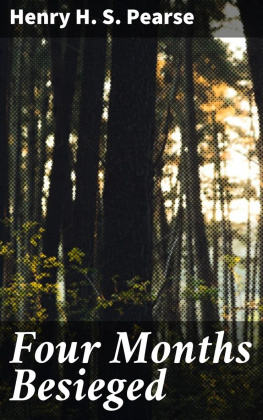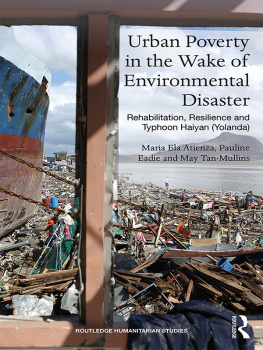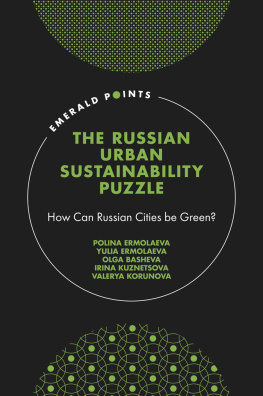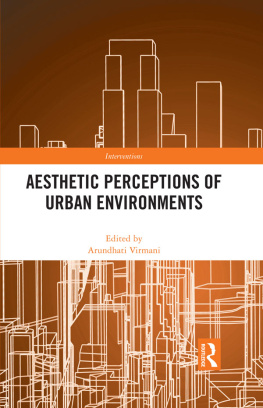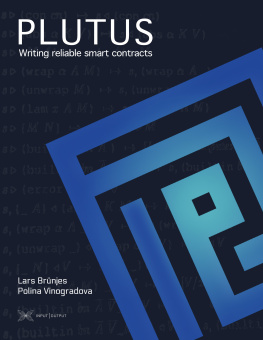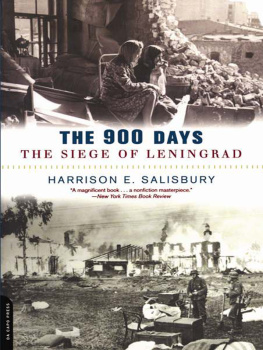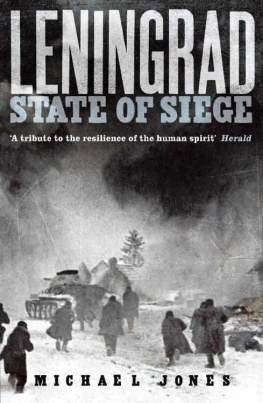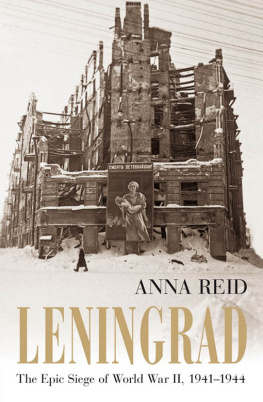Acknowledgments
Sofia Ostrovskaia, a diarist with a rare gift for observation, exclaimed during the most bitter winter of the Leningrad siege (19411942): Beautiful city. Miraculous city. Ville miraculeuse et luciferienne. Disfigured, wounded, leaking blood, impoverished and yet beautiful and yet in spite of everything full of its unique kind of prideunique, estranged from everybody, the pride of unique loneliness and unsurpassed greatness!...
It is strange to thank an entire city, especially this city of the pastyet nevertheless, this is to whom I owe my inspiration.
This book started during my visit to the exhibition The Siege Diary in the Museum of Urban History of Petersburg in 2005. There, while wandering among the images of besieged Leningrad, I asked myself, How was it possible that there existed a world of such magnitude and power? For me this historical and aesthetic representation of the Siege was so revelatory and incomprehensible... How did there exist this world of Siege culture? Why was it hidden from the inhabitants of the city for many long decades? And how were we supposed to understand it now, as it was coming to light at last?
This is when and why I began talking to Siege survivors and their heirs, began going to the archives, began seeking every kind of evidence and publication on this difficult topic. My understanding of Siege culture was shaped by my Petersburg interlocutors: Tatiana Pozdniakova, Nina Popova, Anna Mikhailova, Marina Bokarius, Sergei Iarov, Alla Lapidus, Alena Spitsyna, Valerii Dymshits, Vladimir Piankevich, Tatiana Voronina, and Nikita Lomagin. I want to thank everybody in St. Petersburg who assisted my Siege culture research.
This thinking came as an extension of and was shaped by my graduate projecta study of the culture of Leningrad in the 1920s and 1930s. This was influenced by my mentors at the University of California at BerkeleyEric Naiman, Viktor Zhivov, Irina Paperno, Linda Williams, and Ann Nesbet, and my peers, Luba Golburt, Boris Maslov, Michael Kunichika, and Viktoria Somoff, among many others.
A project with Olga Matich, Mapping Petersburg/Petersburg, spurred my thinking on various ways to study the city, especially as a phenomenon of both culture and practice. Discussions with my collaborators on this project contributed significantly to how I saw writing about the city of ones (often strange) dreams.
I have presented and taught this subject at numerous venues and events where input from my generous and fearless colleagues helped me to move from one stage of the projects development to the next: Mark Lipovetsky, Kirill Kobrin, Ilya Kalinin, Sergey Glebov, Harriet Murav, Serguei Oushakine, Ilja Kukuj, Emily Van Buskirk, Stephanie Sandler, Ilya Kukulin, Evgeny Dobrenko, Alexis Peri, Jeffrey Hass, Mikhail Iampolski, Sergei Loznitsa, Jessica Gorter, Irina Sandomirskaja, Viktoria Schweitzer, Viktor Alferov, Liudmila Vlasovathis project could not have happened without your support.
Of all these events, it was the 2015 conference at the Ludwig-Maximilians-Universitt in Munich, Narrating the Siege: The Blockade of Leningrad and its Transmedial Narratives, that showed me how fruitful discussion can be and how much still remains to be done in this field. I am grateful to my co-organizer, Riccardo Nicolosi, for all his help and patience. The proceedings of this conference have now been published: Blokadnye narrativy (Siege Narratives) (Moscow: NLO, 2017).
While this book was in the works, it inspired other scholarly (and not-so-scholarly) projects of mine: Diary by Sofia Ostrovskaia was also published by NLO (Moscow, 2013); an anthology of unofficial Siege poetry, Written in the Dark, was published by Ugly Duckling Presse (Brooklyn, 2016); a book of (non-)fiction about the Siege post-memory, Zhivye Kartiny (Living Pictures), was published by Ivan Limbakh Press (Petersburg, 2014). Previous versions of this material were published in Slavic Review, Ab Imperio, and Neprikosnovennyj Zapas. I am grateful to these publications for permitting me to expand on these articles.
I am endlessly grateful to Hampshire College and its faculty, students, administration, and staff for being ready to share their ideas about this project with mein classrooms, conference rooms, and private conversations. Annual summer stipends allowed me to continue my work during all these years. Two people within the generous Five Colleges Academic Community extended their knowledge and gave me constant supportthank you, Jeff Wallen and Catherine Ciepiela.
I thank the Blavatnik Foundation for permitting me to work with their unique collection of Siege postcards.
I also want to thank my friends and familyNonna Barskova, Freya Crawford, and Ostap Kinfor loving with me the terrific besieged city of Leningrad.
INTRODUCTION
Today when artists try to depict Leningrad as it was during the Siege, it is precisely the color that doesnt come across. It comes out wrong... I cant quite put my finger on that color, that light. It was sickly, and powerful, and amazingly beautiful. Perhaps it came from within, from a different state of being, a different mode of perception.
Iaroslav Nikolaev
I feel the breathing and language of the city.
Konstantin Kordobovsky
This book focuses on aesthetic responses to urban disaster. During the Siege of Leningrad, from September 1941 to January 1944, the city and its people, surrounded by the military forces of Nazi Germany, suffered 872 days of famine, cold, and darkness, and lost around 1,000,000 to hunger. The Siege experience and its representations are unique. Unlike victims of other twentieth-century political and social disasters such as the Soviet Gulag and the Nazi Holocaust, the inhabitants of Leningrad were for the most part neither displaced nor instantly robbed of their familiar urban environment. Their ties with the city were broken but not demolished; they were doomed to continued contact with Leningrad while it underwent gradual but grave changes. The stakes of my project became clear to me in July 2008, when I traveled to do archival research between St. Petersburgformerly Leningrad, site of the Siegeand Owicim, Poland, site of the Auschwitz death camp. These travels helped to sharpen the overall inquiry of my studyto assess how people subjected to catastrophic events relate to their cultural and physical environment. What if the site of mass death is not covered with faceless barracks, not separated from the outside world by rows of barbed wire or fashioned from the rubble of adjacent villages that have been leveled for building material? What if it is not completely without history and meaning for its victims who, unlike those in Auschwitz, were not brought from afar and robbed of their identities and cultural roots? What if instead this site is, like Leningrad, a city of architectural grandeur, a palimpsest consisting of myriad levels of historical, cultural, and personal memory? The inhabitants of Leningrad lost virtually everything in the disaster except their place, and this place served them as an inexhaustible source of contemplation and writing. These multiple functions create a challenge that readers of Siege urban representations must confront. Through close readings, they have to untangle the many layers and agendas of these works, as they attempt to perceive representations of the shattered city as a site of unique complexity.



